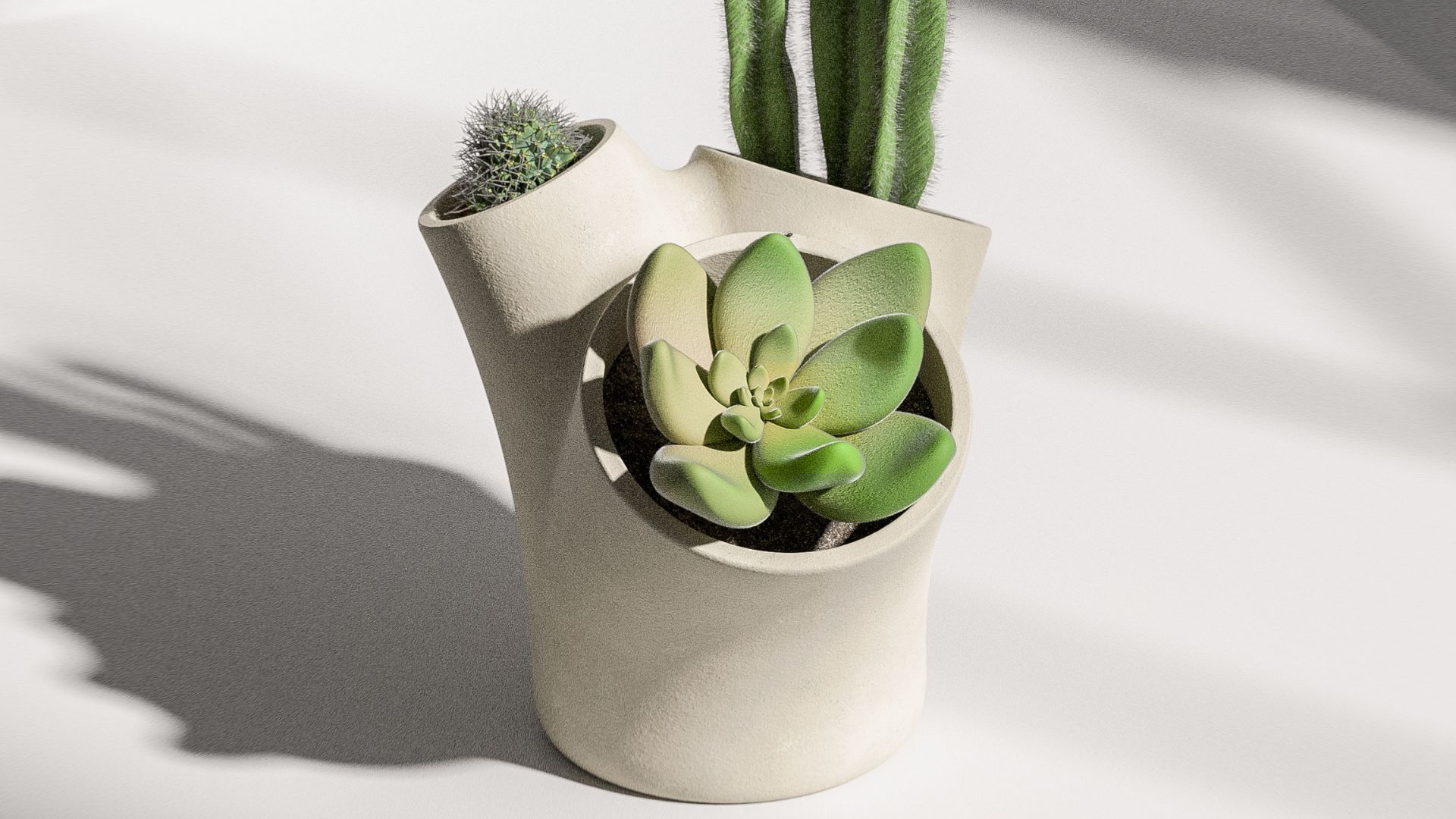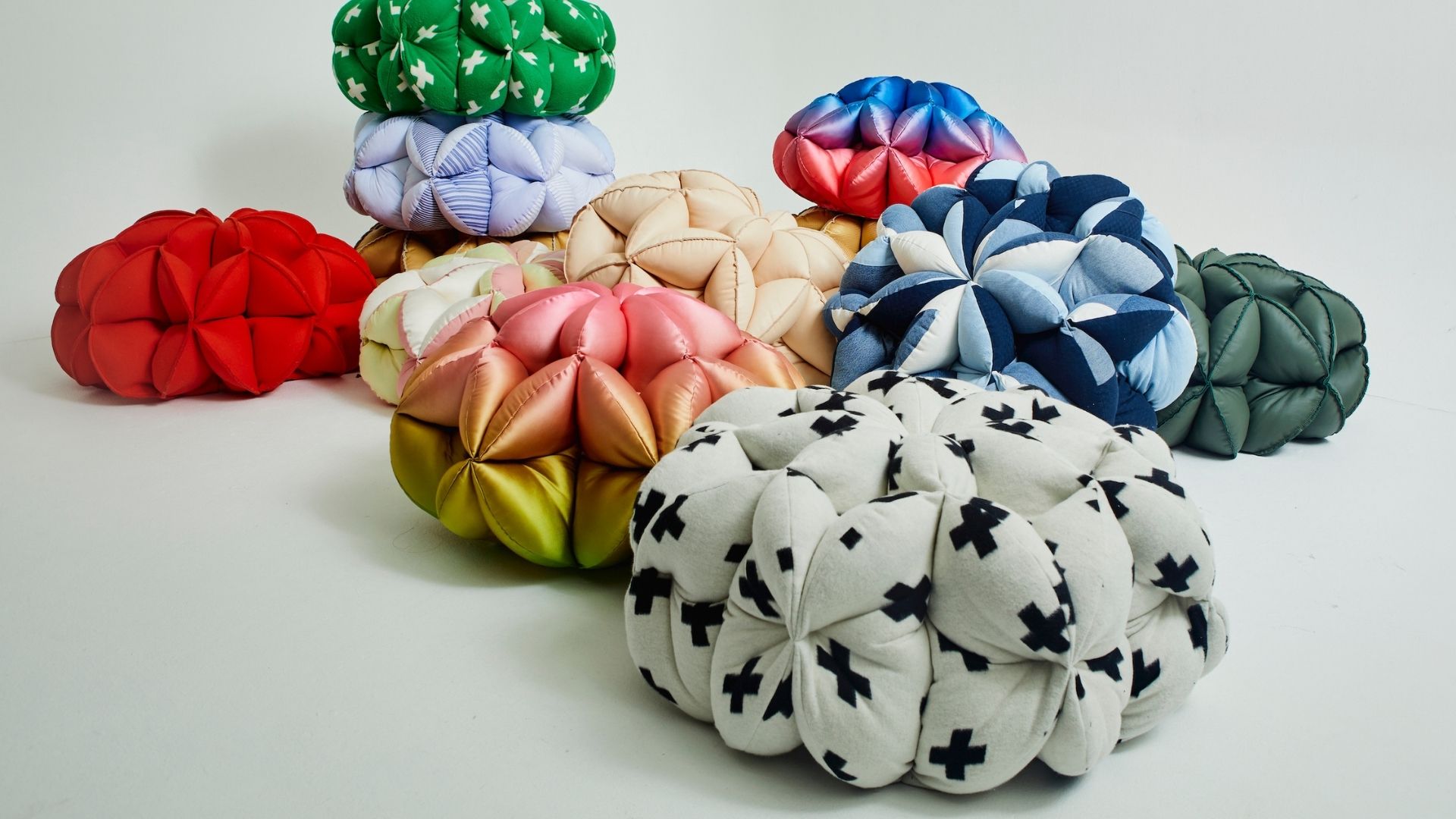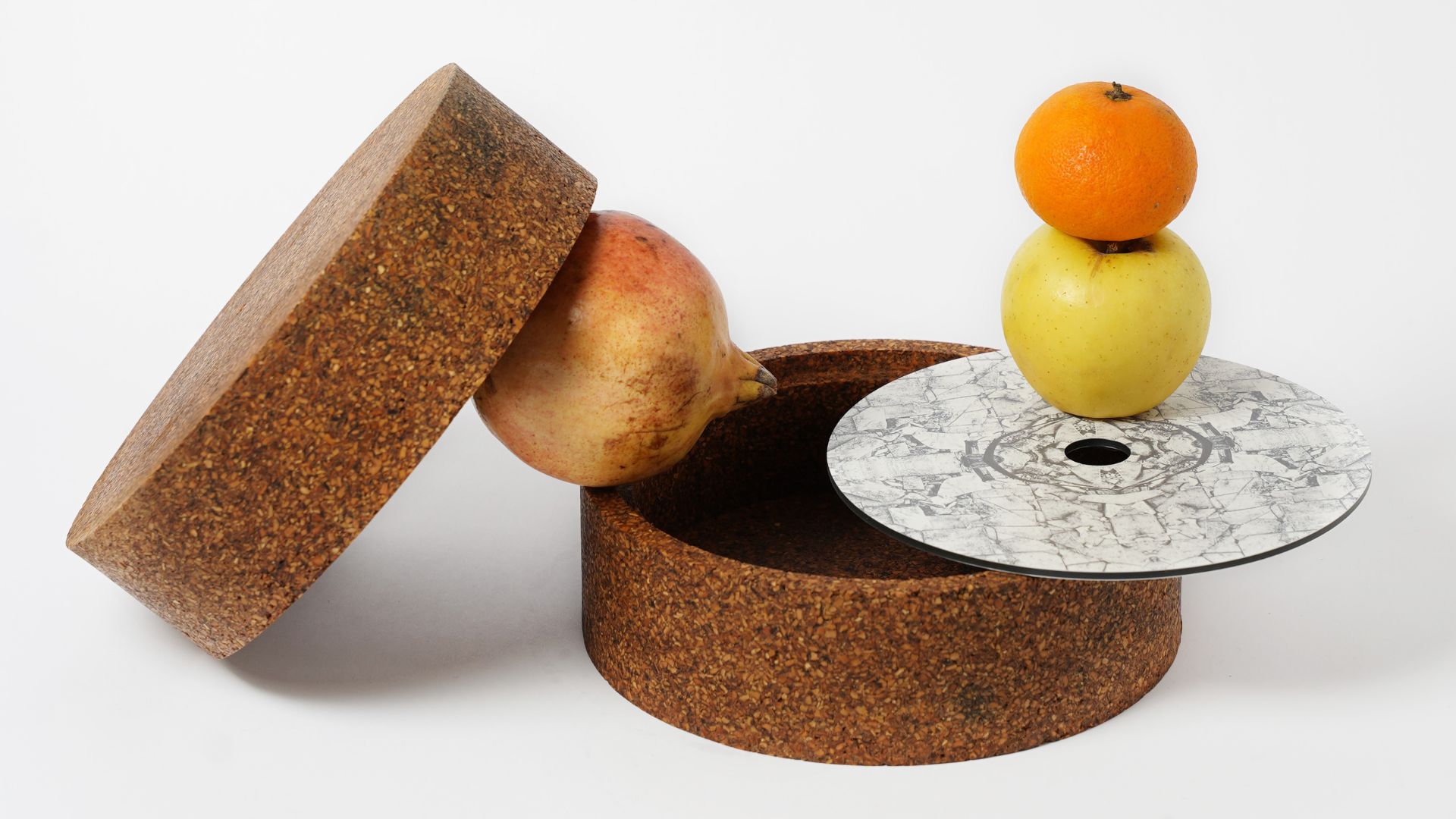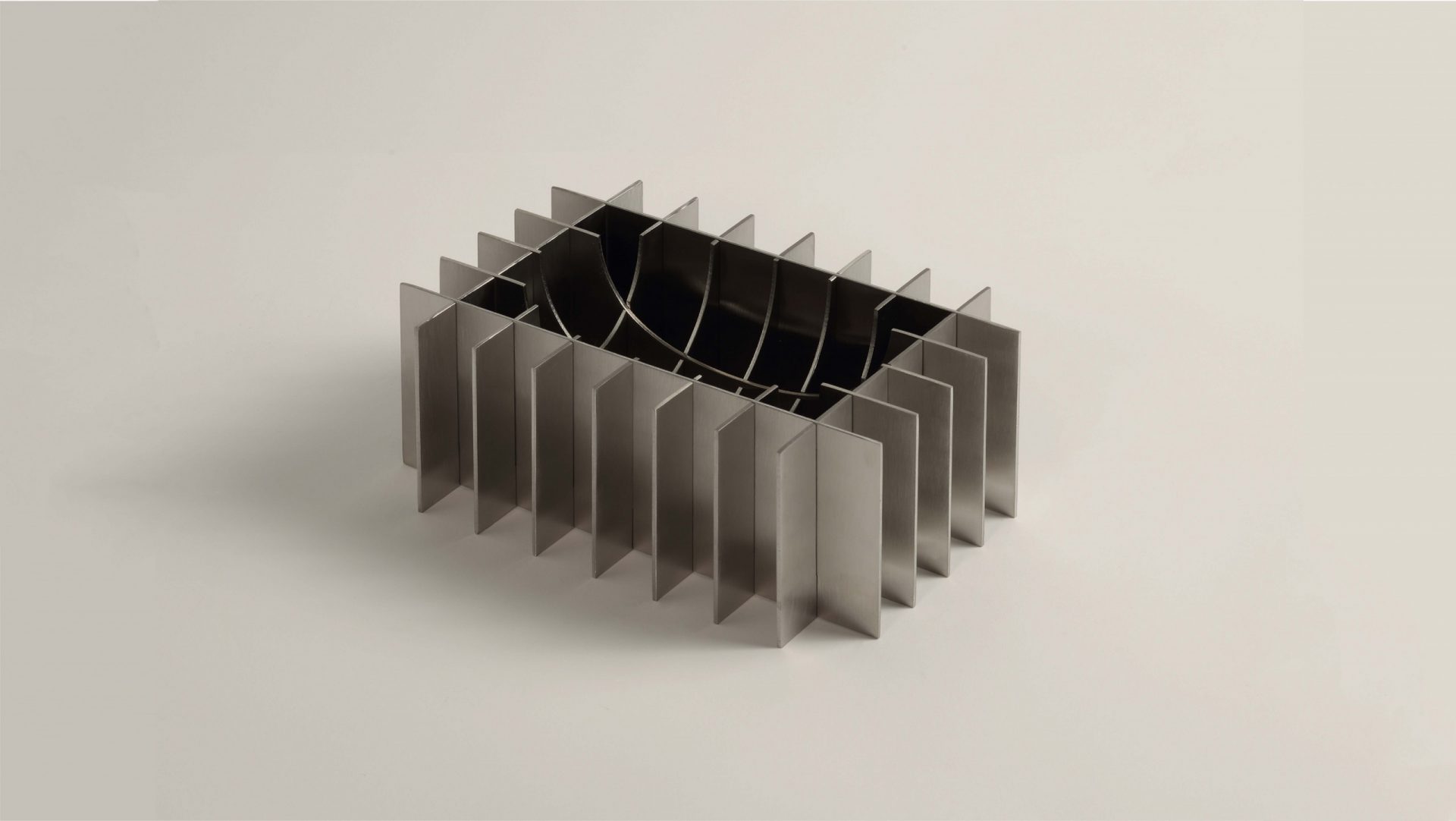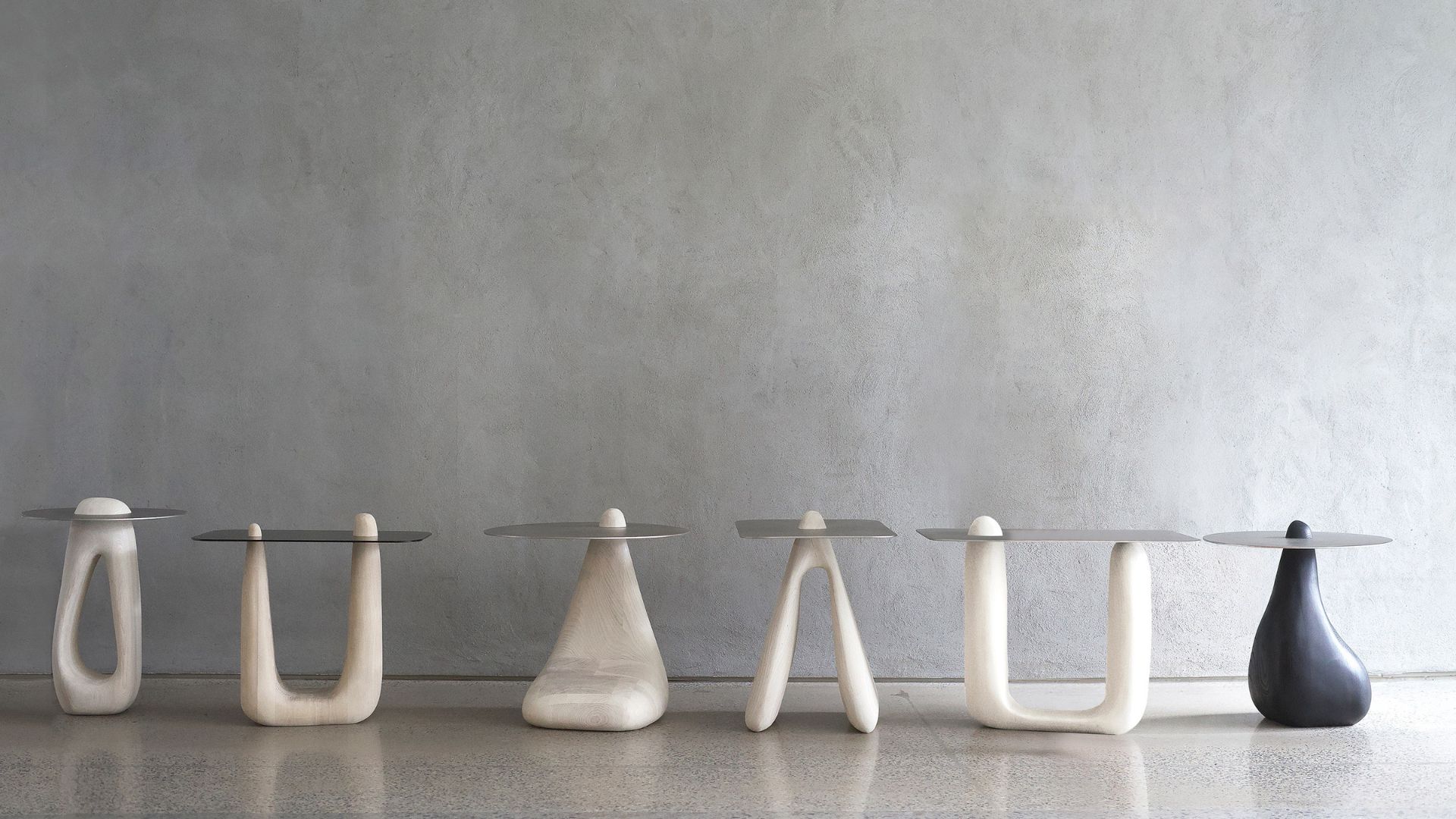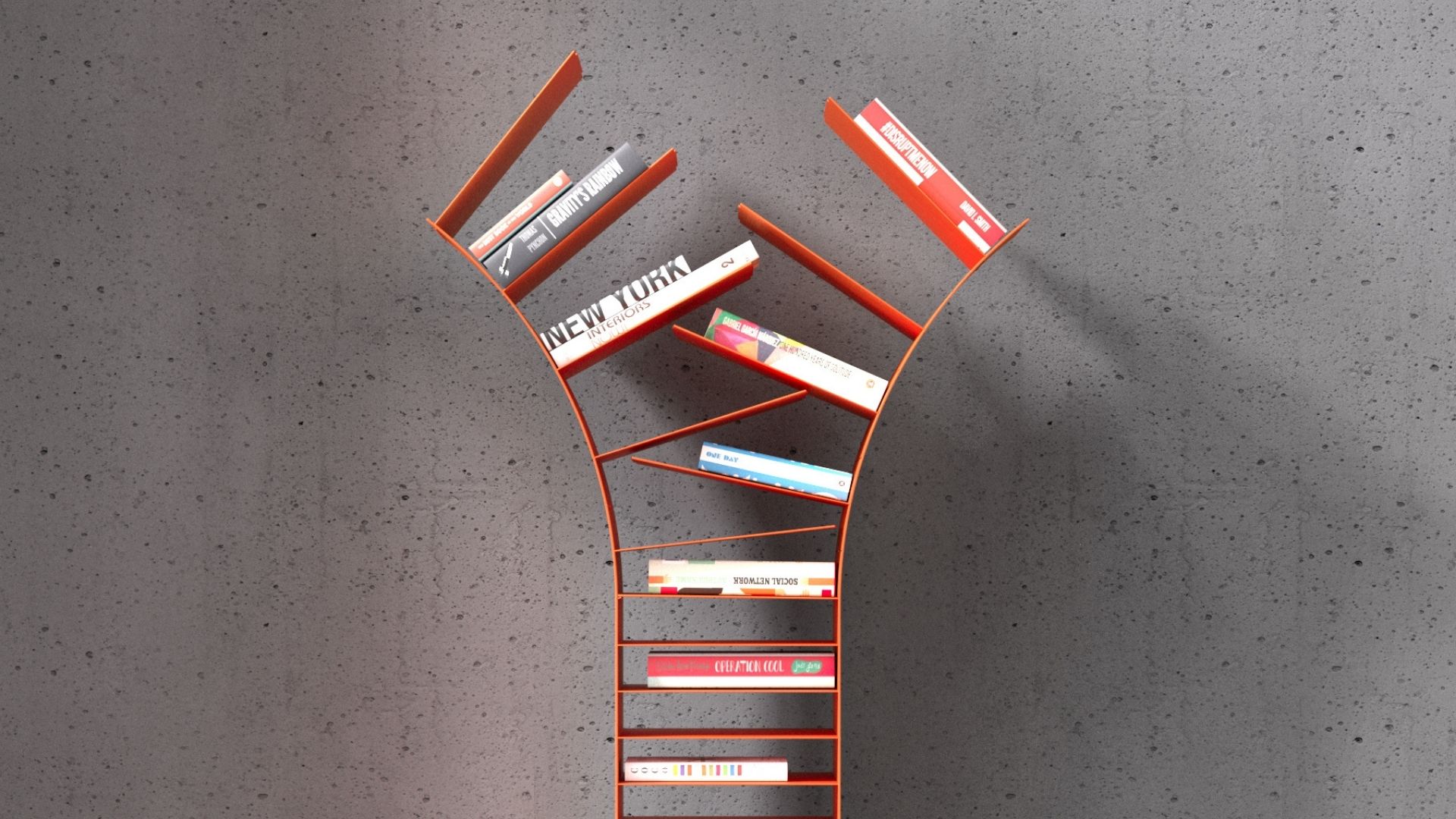Hundreds of layers of beech wood are aligned, combined and gently sculpted
Inspired by the dynamic relationship between nature and machine, AESTUS is a series of stratified wooden vases designed and manufactured to explore a new synthesis of traditional materials and modern technology
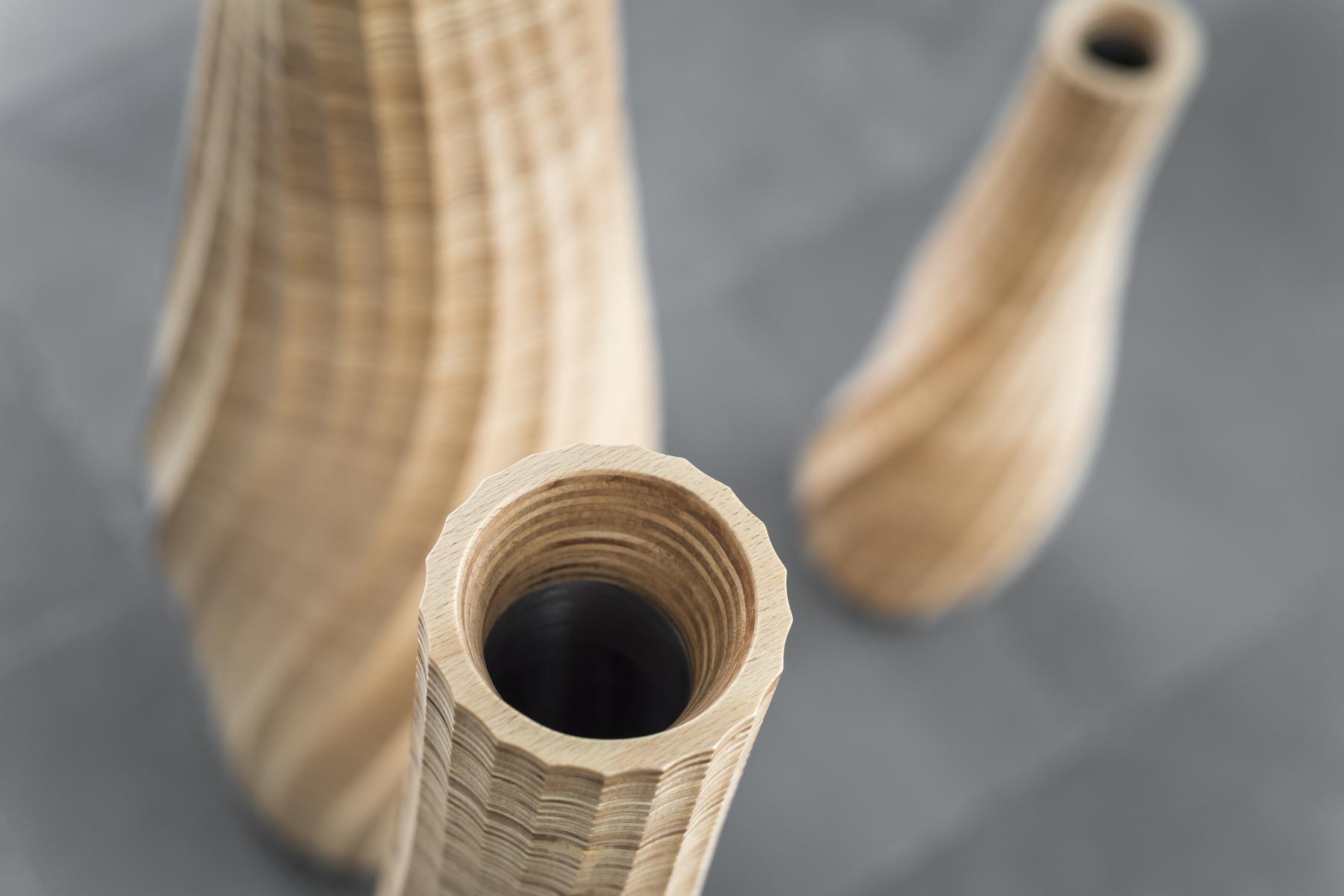
The waves on the surface of Aestus expand and contract in dynamic spirals creating a wooden vase collection made of soft natural curves and a futuristic, warm appeal. A stainless-steel internal cavity is a water-resistant repository and functions as stable a base for the vase too.
Architecture and wood researcher Oliver David Krieg designed a poetic interior piece blurring the boundaries between handcrafts and automated manufacturing.
Tell us about Aestus: what makes it unique?
Oliver D. Krieg:
“AESTUS blends material and machine. Inspired by the dynamic relationship between nature and machine, AESTUS is a series of stratified wooden vases designed and manufactured to explore a new synthesis of traditional materials and modern technology.
Carved from hundreds of layers of wood by an industrial robot, the vases capture the fluidity of the machine’s movements in the depth of the wooden texture. Merging art and engineering, each vase is unique and custom made in Germany from premium beech wood. AESTUS is meant to celebrate the emerging aesthetic potentials of contemporary wood design.”

What was your experience with ExpoWanted?
Oliver D. Krieg:
“I was very excited when I first heard about it, but even more thrilled when I learned that I was part of the short list and the top ten. I find these kinds of contests that people can follow on social media very useful and help young designers like myself to gain exposure and feedback from many people. I would definitely participate again.”

How does Aestus respond to current design trends?
Oliver Krieg:
“Although I don’t try to follow any trends I can definitely see that AESTUS is part of a larger group of designs that are inspired by digital design and digital fabrication processes. This trend is enabled by the possibility to design and make extremely complex, three-dimensional shapes that would not have been possible just a few years ago.
What makes AESTUS unique, however, is its conversation with natural materials, and I hope it makes people reflect on current technologies as well as natural forms.”

What was the hardest part in the development of Aestus?
Oliver D. Krieg:
“The hardest part was to find a healthy balance between the natural, physical, and the digital. During the development of AESTUS the robot’s movement basically became one of the main design tools as it directly influences the shape of each groove.
Parametric software and digital simulation tools were specifically developed to explore the design possibilities and seamlessly integrate the robotic fabrication, while prototypes were manufactured to precisely understand the constraints of the robot and to achieve a continuously high quality.”

What is the next step for Aestus?
Oliver D. Krieg:
“I am working on gaining more exposure for my studio, but find clients that are either interested in this particular product or even just the process, which could be applied to many different surfaces and materials. I’m currently working on a new version with different materials.”

In your opinion, where is the interior design sector heading to?
Oliver D. Krieg:
“As one of the oldest and most natural materials known to humankind, wood’s intricate qualities have always been alluring to architects and designers.
Suffering under the connotation of an outdated material in the past decades, wood has just recently experienced renewed interest due its sustainability, adaptability, and its tactile and visual depth.

It is no coincidence that a new awareness for the natural has emerged together with innovative digital technologies that enable designers to directly engage with new means of fabrication. In this regard, the interior design and interior products sectors are shifting their attention to sustainability and responsible manufacturing.
I don’t see specific styles emerging but rather a renewed interest in modern and classic design solutions with wood.”








